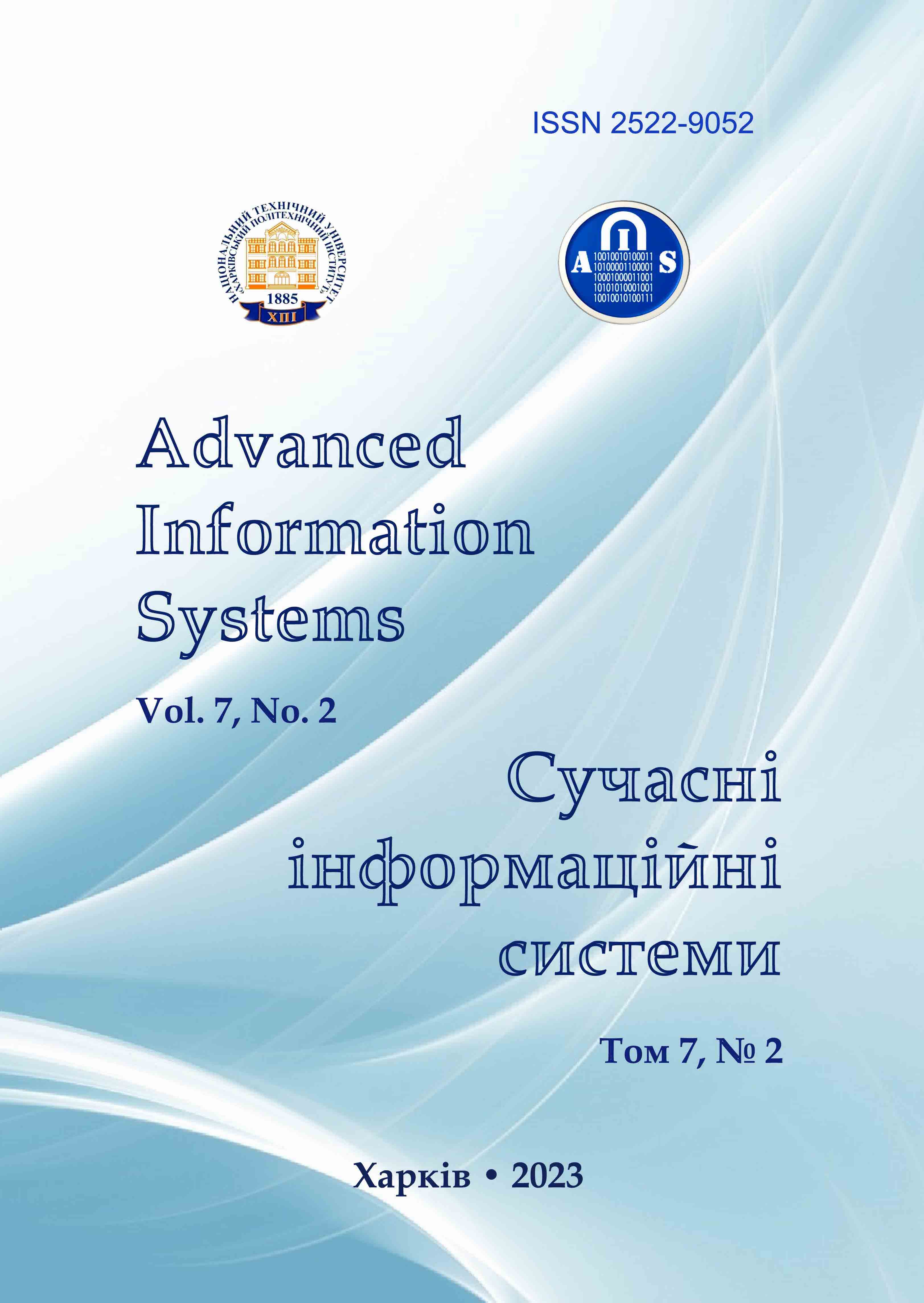PARAMETRIC SYNTHESIS OF THE INVARIANT SYSTEM OF CAR COURSE STABILITY
Main Article Content
Abstract
The problem of constructing the invariant stabilizer of the ESP (Electronic Stability Program) car course stability system is considered by implementing two control principles by the electronic brake force distribution unit EBD (Electronic Brakeforce Distribution) – the principle of control by deviation and the principle of control by external disturbance. The values of the variable parameters of the stabilization algorithm are selected from the conditions for minimizing both the static and dynamic errors of the system. Two brake fluid pressure sensors are introduced into the EBD structural-functional scheme in the brake lines of the right and left sides of the car. It is proven that the pressure difference of the brake fluid, which is measured by pressure sensors, is proportional to the external disturbance acting on the car body from the side of the road surface. Therefore, in order to give the ESP system the property of invariance to external disturbances, the control signal generated by the EBD electronic unit contains current information not only about the parameters of the disturbed movement of the car, namely, about the angle of deviation of the longitudinal axis of the car relative to the given direction of movement, about the angular velocity of rotation of the body relative to its vertical axis and about lateral displacement of the center of mass of the body, but also the current information about the external disturbance acting on the car body. Recommendations for choosing the values of variable parameters of the ESP system stabilizer are given, which ensure the minimization of both static and dynamic errors of the closed system in the emergency braking mode.
Article Details
References
Tavernini, D., Velenis, E. & Longo, S. (2015), “Model-based active brake force distribution for pitch angle minimization”, 2015 54th IEEE Conf. on Decision and Control, Osaka, Japan, pp. 197-202, doi: https://doi.org/10.1109/CDC.2015.7402108.
Nakamura, E., Soga, M., Sacai, A., Otomo, A., & Kobayashi, T. (2002), Development of Electronically Controlled Brake System for Hybrid Vehicle. SAE 2002 World Congress. Detroit, Michigan, March 4 – 7, 2002, Printed in USA. 6 p.
Park, G. & Choi, S. B. (2016), “Optimal Brake Distribution for Electronic Stability Control Using Weighted Least Square Allocation Method.”, 16 International Conference on Control «Automation and Systems» (ICCAS 2016). Oct. 16 – 19, 2016 in HICO. Gyeongju, Korea, pp. 1420–1425, doi: https://doi.org/10.1109/ICCAS.2016.7832492.
Wu, Xinyu. (2015), “Control Strategy and Algorithm Study on Light Vehicle Electronic Mechanical Braking System”, 5th International Conference on Education, Management, Information and Medicine (EMJM 2015), pp. 1453–1458, doi: https://doi.org/10.2991/emim-15.2015.282.
Her, H., Cho, W. & Yi, K. (2011), “Vehicle Stability Control Using Individual Break Force Based on Tire Force Information”, 14th International IEEE Conference on Intelligent Transportation Systems. October 5 – 7, 2011, Washington, USA, pp. 22–29, doi: https://doi.org/10.1109/ITSC.2011.6082997.
Aleksandrov Ye. Ye., Aleksandrov T. Ye., Ovcharenko Yu. Ye. (2019), Enhancement of technical and ergonomic characteris.tics of movable objects of military purpose, monograph, KHNADU Publ., Kharkiv, 176 p. (in Ukrainian).
Aleksandrov, Ye.Ye, Aleksandrova, T.Ye and Morgun, Ya.Yu. (2022), “Parametrychnyi syntez tsyfrovoho stabilizatora systemy kursovoi stiikosti avtomobilia-palyvozapravnyka [Parametric synthesis of the digital stabilizer of the course stability system of the fuel-filling vehicle]”, Problemy keruvannia ta informatyky, No. 2, pp. 69–91 (in Ukrainian), doi: http://doi.org/10.34229/2786-6505-2022-2-5.
Aleksandrova, T. Ye. (2013), “K voprosu sinteza lineinykh invariantnykh sistem stabilizatsii [On the question of the synthesis of linear invariant stabilization systems]”, Visnyk Natsionalʹnoho tekhnichnoho universytetu «KhPI». Seriya : Systemnyi analiz, upravlinnia ta informatsiini tekhnolohii, NTU «KhPI», Kharkiv, No. 62 (1035), pp. 152–158 (in Russian).
Aleksandrov, Ye., Aleksandrova, T. & Morgun, Ya. (2019), “Parametric Synthesis of the Electronic Control Unit of the Course Stability System of the Car”, Eastern-European Journal of Enterprise Technologies, No. 6/9(102), pp. 39–45, doi: https://doi.org/10.15587/1729-4061.2019.188185.
Sobol I. M. (1973), Numerical Monte Carlo Methods] Nauka, Moskow, 311 p.
Khimmelblau D. (1980). Prikladnoe nelineinoe prohrammirovanie [Applied Nonlinear Programming], Mir, Moskow, 280 p. (in Russian).
Voronin A.N. (1992), Mnohokriterialnyi sintez dinamicheskikh system [Multicriteria Synthesis of Dynamic Systems], Naukova dumka, Kyiv, 160 p. (in Russian).
Voronin A. N. (2001), Kompromiss i konsensus v teorii vektornoi optimizatsii [Compromise and consensus in vector optimization theory], Problemy upravleniia i informatiki, No. 5, pp. 14–16 (in Russian).
Besekerskiy, V.A. & Popov Ye.P. (2004), Teoriya sistem avtomaticheskogo upravleniya [Theory of automatic control systems], Professiia, Saint-Petersburg, 752 p. (in Russian).
Aleksandrov, Ye.Ye., Kozlov, Ye.P. and Kuznyeczov, B.I. (2002), Avtomatychne keruvannya ruhomymy obyektamy i tehnologichnymy procesamy. Tom 1. Teoriia avtomatychnoho keruvannia [Automatic control of moving objects and technological processes. Volume 1. Theory of automatic control], NTU «KhPI», Kharkiv, 476 p. (in Ukrainian).
